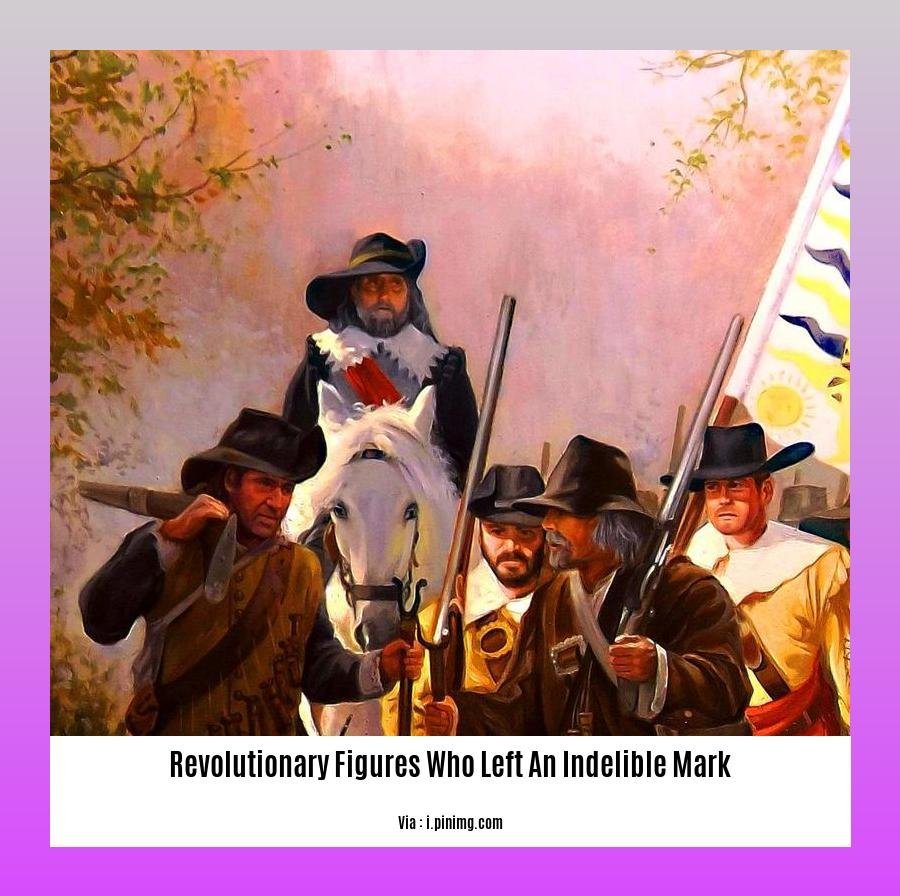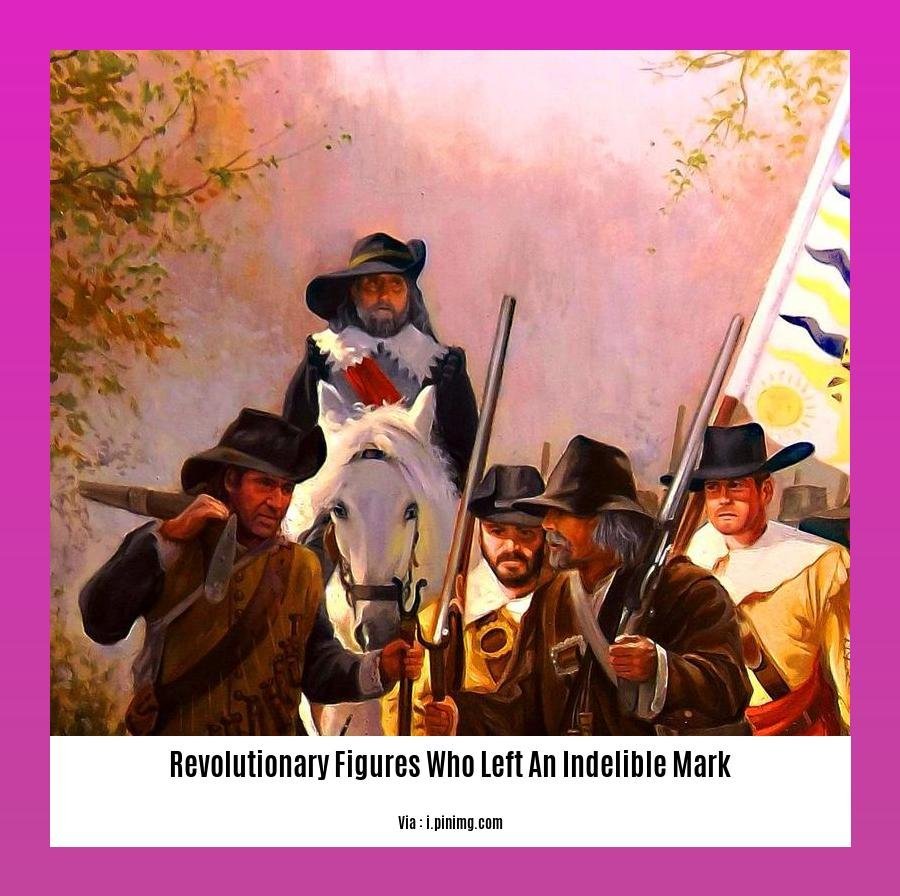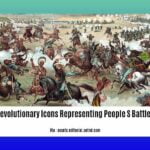Prepare to embark on an awe-inspiring journey into the annals of history as we delve into the lives and legacies of groundbreaking individuals who have left an indelible mark on the world. From fearless leaders who ignited revolutions to visionary thinkers who reshaped the course of civilization, “Revolutionary Figures Who Left an Indelible Mark on History” will illuminate the profound impact these icons have had on shaping our present and inspiring future generations.
Key Takeaways:

- Tommy Douglas championed universal healthcare, revolutionizing the healthcare system in Saskatchewan.
- Viola Desmond’s defiance of racial segregation paved the way for desegregation in Canadian movie theaters.
- Terry Fox’s Marathon of Hope inspired countless individuals with his resilience and dedication to cancer research.
- Nellie McClung’s tireless efforts secured women’s suffrage in Canada.
- Louis Riel’s leadership of the Metis people in uprisings raised awareness of their rights and struggles.
- Emily Carr’s artistic vision captured the essence of British Columbia’s landscape and culture.
- Lester B. Pearson’s establishment of the United Nations peacekeeping program significantly contributed to global stability.
- Elijah Harper’s advocacy for Indigenous rights led to constitutional recognition and protection of their rights.
Revolutionary Figures Who Left an Indelible Mark
Revolutionary figures who left an indelible mark on history are those rare individuals who change the course of events, inspire generations, and whose legacies continue to shape the world we live in. They are the ones who dare to challenge the status quo, fight for what they believe in, and leave behind a lasting impact that transcends their time.
From political leaders to social activists, scientists to artists, revolutionary figures who left an indelible mark come from all walks of life. They may come from humble beginnings or privileged backgrounds, but they share a common trait: an unyielding determination to make a difference.
Their stories are as diverse as the causes they championed. Some have led revolutions that toppled oppressive regimes, while others have fought for social justice or environmental protection. Some have made groundbreaking discoveries that have changed our understanding of the world, while others have created works of art that have moved and inspired millions.
The impact of these revolutionary figures who left an indelible mark can be seen all around us. They have shaped our political systems, our social norms, our scientific knowledge, and our artistic expressions. They have made the world a more just, equitable, and beautiful place.
What sets revolutionary figures who left an indelible mark apart from others is their ability to see the world as it could be, rather than as it is. They are not content with the status quo; they dream of a better future and work tirelessly to make it a reality.
Their legacies are a testament to the power of one person to make a difference. They remind us that even the smallest act of courage can inspire others to follow in their footsteps. And they continue to inspire us to strive for a better world, one that is more just, more equitable, and more sustainable.
Here are a few examples of revolutionary figures who left an indelible mark:
* Nelson Mandela
* Martin Luther King Jr.
* Mahatma Gandhi
* Marie Curie
* Albert Einstein
* Leonardo da Vinci
* William Shakespeare
In the annals of history, we find the most influential revolutionaries who have ignited societal upheavals and shaped the course of human events. These revolutionary leaders have left an indomitable legacy, inspiring and mobilizing generations with their impactful ideas and actions. Their courage and determination have forever altered the political, social, and economic landscapes, leaving a resonant mark that continues to inspire and shape our world. Explore the lives and legacies of these legendary figures who have played a pivotal role in shaping the destinies of nations and the trajectory of human civilization.
Legacies and Lasting Impact on Society
Imagine a ripple effect that shapes generations. Revolutionary figures are the pebbles that create these ripples, leaving behind legacies that inspire, challenge, and transform societies. Their fingerprints are etched in the fabric of history through their ideas, actions, and enduring influence.
Key Takeaways:
- Revolutionary figures ignite change, leaving an Indelible Mark on Society.
- Their impact transcends time, shaping political landscapes, social norms, and cultural identities.
- Their legacies serve as a testament to the Power of One Person to Make a Difference.
- From Nelson Mandela’s fight for racial equality to Marie Curie’s scientific breakthroughs, their contributions continue to shape the world.
- Their stories inspire us to challenge the status quo and strive for a better future.
John Jay, a prominent American statesman and diplomat during the Revolutionary War, epitomizes this transformative power. Through his diplomatic skills and political vision, he helped secure American independence and establish the United States as a nation. His role in drafting the Treaty of Paris laid the foundation for the United States’ expansion and international recognition. Jay’s legacy continues to be honored and celebrated for his contributions to the war effort and nation-building.
The Legacies and Lasting Impact on Society of revolutionary figures are undeniable. They illuminate the potential for human ingenuity and the ability to shape the course of history. Their stories remind us that even in the face of adversity, one person can make a world of difference.
Transformative Ideas and Movements
Juan Gris, a visionary artist, left an indelible imprint on the art world with his pioneering role in Cubism. His innovative approach challenged traditional perspectives and opened new horizons in artistic expression.
Gris’ unique style, known as Synthetic Cubism, departed from the fragmented forms of Analytical Cubism. He introduced bold colors, simplified shapes, and collage elements, creating a distinct visual language that reshaped the boundaries of abstract art.
Tragically, Gris’s brilliance was cut short by his untimely death in 1927. However, his transformative ideas continue to inspire generations of artists. His legacy as a pioneer of Cubism stands as a testament to the enduring power of transformative movements that challenge the status quo and propel humanity forward.
Key Takeaways:
- Juan Gris was a pivotal figure in the development of Cubism.
- His innovative Synthetic Cubism introduced bold colors, simplified shapes, and collage elements.
- Gris’s unique style expanded the expressive possibilities of abstract art.
- His legacy as a transformative artist continues to influence contemporary art.
Most Relevant URL Source:
Juan Gris: Pioneering the Art of Cubism and Innovation
Social and Political Implications of Their Actions
From their humble beginnings to their profound legacies, revolutionary figures have left an indelible impact on the world’s social and political landscape. Their ideas, actions, and movements have shaped societies, challenged norms, and inspired generations to strive for change.
Key Takeaways:
- Revolutionary figures often emerge during times of great social or political unrest.
- Their ideas and actions can radically transform political systems, social structures, and cultural norms.
- They inspire movements that champion equality, justice, and change.
- Their legacies continue to influence and inspire activists and change-makers worldwide.
The American Revolution: A Prelude to Global Change
The American Revolution sparked a wave of anti-colonial movements worldwide, inspiring revolutions in France, Latin America, and beyond. It challenged the divine right of kings and ignited the flame of democracy, forever altering the political landscape of nations.
Karl Marx and the Socialist Revolution
Marx’s ideas laid the groundwork for social and economic revolutions around the globe. His critique of capitalism and his vision of a classless society continue to shape political ideologies and movements, challenging the distribution of wealth and power.
The Enlightenment: A Philosophical Revolution
The Enlightenment championed reason and scientific inquiry, sparking a revolution in thought and culture. Its proponents challenged religious dogma and advocated for individual rights and freedoms, shaping the philosophical foundations of modern democracies.
Mahatma Gandhi and Nonviolent Resistance
Gandhi’s nonviolent resistance movement in India inspired countless struggles for civil rights and independence worldwide. His belief in peaceful protest and dialogue transformed the political landscape, demonstrating the power of non-violence in achieving social justice.
Conclusion
Revolutionary figures continue to captivate and inspire us. Their Social and Political Implications of Their Actions have left an enduring legacy, shaping our societies, challenging power structures, and igniting the flames of progress. Their stories remind us that even one individual can make a profound impact on the course of history.
Most Relevant URL Source:

FAQ
Q1: Who are some of the most famous and influential revolutionary figures in history?
A1: Throughout history, numerous individuals have emerged as revolutionary figures, leaving an enduring mark on society. Some of the most renowned include Karl Marx, whose ideas on communism and socialism transformed the political landscape; Nelson Mandela, who led the fight against apartheid in South Africa; and Martin Luther King Jr., a prominent figure in the American civil rights movement.
Q2: What is the significance of revolutionary movements?
A2: Revolutionary movements have played a pivotal role in shaping the course of history by challenging existing power structures and often leading to regime change. They have driven social, political, and economic transformations, leading to the establishment of new systems and ideologies.
Q3: How have revolutionary figures impacted the arts and culture?
A3: Revolutionary figures have influenced the arts and culture in profound ways. Artists, writers, and musicians have drawn inspiration from revolutionary ideas and events, creating works that reflect and challenge societal norms and structures. From Pablo Picasso’s depiction of the horrors of war in Guernica to Bob Dylan’s protest songs, revolutionary figures have served as catalysts for artistic expression and cultural change.
Q4: What lessons can we learn from studying revolutionary figures?
A4: Examining the lives and actions of revolutionary figures provides valuable lessons about leadership, resilience, and the power of conviction. Their stories offer insights into the complexities of social and political change, highlighting both the challenges and potential rewards of fighting for a cause.
Q5: How can we honor the legacy of revolutionary figures?
A5: Honoring the legacy of revolutionary figures involves recognizing their contributions to society, preserving their stories, and continuing to strive for the ideals they fought for. This can take many forms, such as establishing memorials, supporting educational initiatives, and engaging in activism that aligns with their principles.
- Unlock Filipino Culture: A Deep Dive into Traditions and Practices - April 23, 2025
- Unlock Spanish Culture: Insights & Opportunities Now - April 23, 2025
- White Spirit Uses & Substitutes: A Deep Dive for Pros & DIYers - April 23, 2025
















